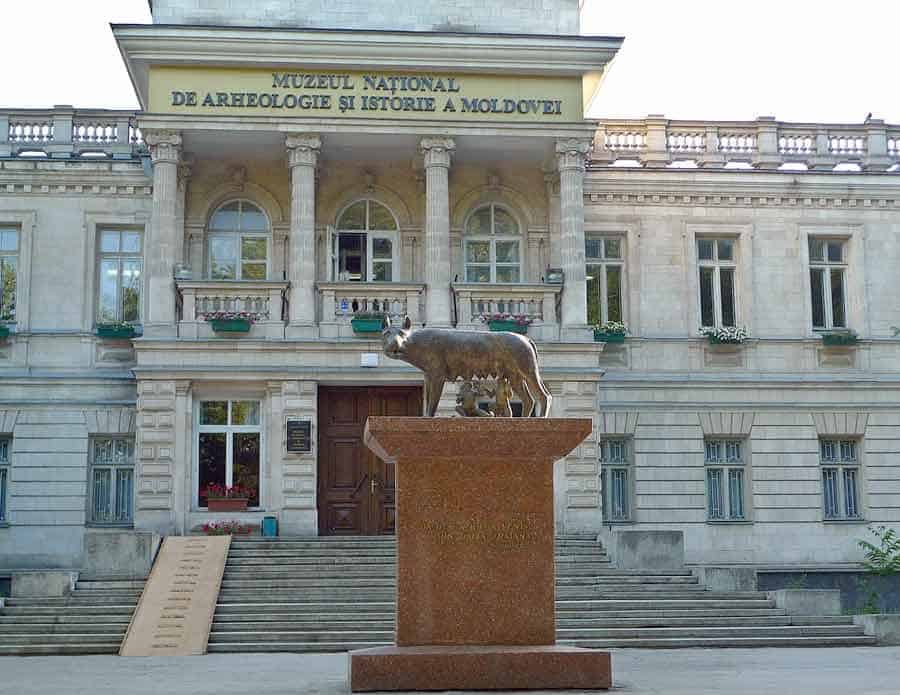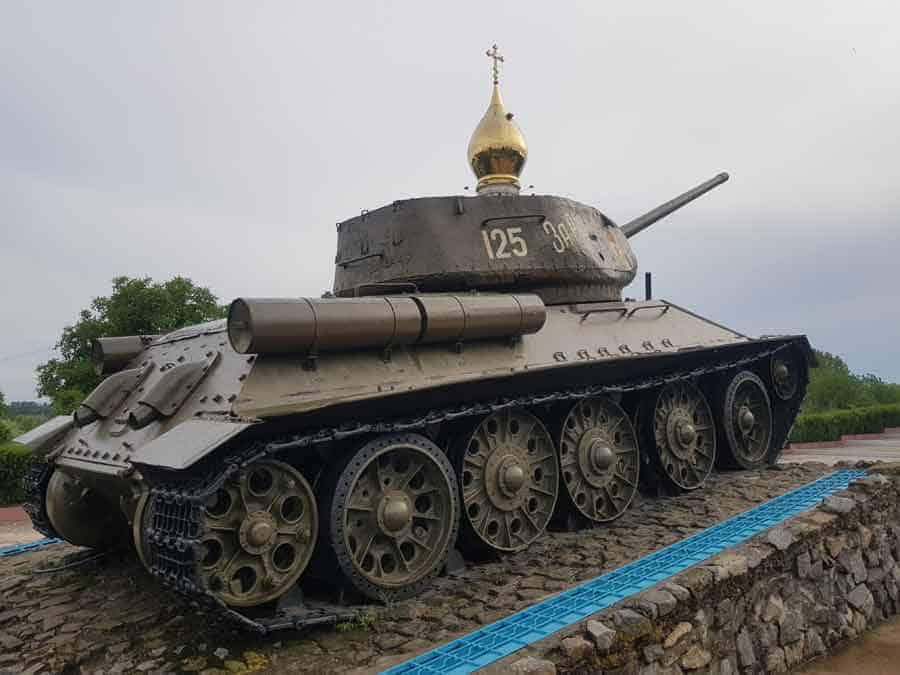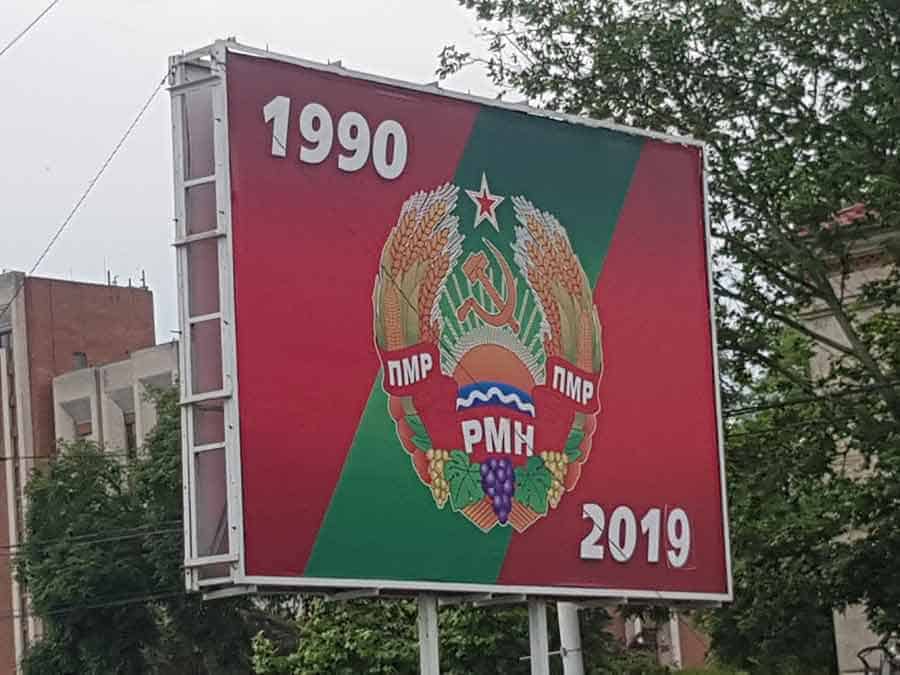A road less travelled: Moldova and Transnistria
Trapped in a “frozen conflict” from 1990, landlocked, poor, lying on the intersection between the EU (Romania) in the West and the unstable Ukraine and Russia in the East, rife with scarcity, corruption, local sheriffs and Lenin’s legacy, Moldova and Transnistria still leave the impression of a region that can expect a brighter future than ours.
“Sanitary control!” A middle-aged woman in a bright-blue uniform opens the door of our compartment in the train going from Bucharest to Chişinău and sticks her head in. We confirm that that we are healthy from head to toe and she leaves without saying anything further. At the Romanian-Moldovan border, the legendary transfer of train wheels to the wider, “Russian track” takes place. Namely, 1,520 millimeters is the width of the railway tracks in Russia, CIS members, Baltic states, Mongolia and Finland. It’s been like that since the 19th century when the Russian Empire started building a railway network that would criss-cross “the Empire on which the sun never sets”. The “narrow” track is used in the countries of North America, Europe and China and is 1,435 millimeters wide.
Some half an hour later we arrive to the main railway station in Chişinău, the capital of Moldova, one of the poorest countries in Europe. Moldova and Ukraine share last place in Europe in terms of GDP per capita.
On that Saturday morning, at 7 o’clock, the Chişinău railway station building looked much cleaner and prettier than most railway stations in Europe that I saw, let alone our, dilapidated ones. Pots with exotic flowers and aquariums with tropical fish do look slightly bizarre in a building that dates back to the Russian empire, but everything here is absolutely spotless.

The six of us embarked on a journey from Bucharest to Odesa, wanting to see this exotic part of Europe that is not that frequented and that many people from the West have prejudices about. After the drive to our flat and a one-hour walk to the town centre, our first impression was that Chişinău is cleaner and better regulated than most East European capitals. The roads are bad, just like in Serbia, but you cannot find a single cigarette butt, or a plastic bag, or a piece of plastic packaging discarded here. The people in Moldova are poor, but their awareness about utility order is much higher than in the Balkan states.
While riding in the lift, the owner of the flat in which we are staying asks us about the current situation in Serbia and whether there is still war there. When we ask her about the 1990 war in Moldova, which resulted in Transnistria, a narrow strip of land located near the border Ukraine, declaring independence, our hosts replies that the war lasted only three months, but that it was very cruel and bloody. She makes a sign of cross with her hand and mumbles:”I hope we never see war again.”
ROMAN SHE-WOLF AND PAIN TRAIN

Everything was calm in the town centre, but there was a certain tension with police patrols on every corner. A day later, the Moldovan court dismissed Igor Dodon as the country’s president and appointed the former Prime Minister Pavel Filip as the interim president. The court’s explanation was that Dodon did not dissolve the parliament, which he was obligated to do in accordance with the previous decision of the Constitutional Court. On Sunday, June 9th, after the court appointed the interim president, Filip scheduled snap elections for September. The Moldovan Parliament approved a coalition government, formed after several months of negotiations in which the Socialist Party of pro-Russian Igor Dodon and the pro-European alliance ACUM of Prime Minister Maia Sandu took part. The official Moscow called the latest events in Moldova as “criminal”. Which direction will this poor country, which is only a few kilometres from the Black Sea, take – towards the EU or Russia? That remains to be seen in the near future.
The building of the National History Museum of Moldova is located in a luxurious villa, built in an eclectic style, on the site of an identical building which had been almost completely demolished in the 1977 earthquake. There is another bizarre detail in front of the building – a replica of the Roman she-wolf with Romulus and Remus. The story behind this sculpture is quite interesting. Namely, in the 1920s, Mussolini’s Italy donated five copies of the she-wolf to five Romanian cities. One of them was Chişinău, then part of Romania and the second largest city in the country. In 1940, as a result of the pact between Hitler and Stalin, Moldova fell into the hands of the Soviets, and a year later, the Germans returned it to Romania. After the Second World War, Moldova became one of the republics in the USSR. It was then that the she-wolf statue disappeared. After Moldova declared independence in 1990, brotherly Romania sent to Chişinău a new she-wolf statue, the symbol of Rome.
There is another monument that draws attention – the Pain Train, a gigantic sculpture made in 1990 and dedicated to mass victims of Stalin’s deportations to Siberia from 1940 to 1951. During that period, Stalin also expelled 50,000 people from Moldova to Kazakhstan.

“Fans of bizarre feel right at home here”, my colleague Žikica said after we stumbled across a children’s recital that took place between tanks, cannons, rocket launchers and MIGs in the military museum yard. The children sang about Jesus and his return to this world. Later, we heard that those were the students of a religious school who chose a rather interesting location for their event.
BIGGEST WINE CELLAR IN THE WORLD
Moldova gained wide popularity in the Western world when it was mentioned in the TV series “Dynasty”, as a fictitious monarchy where Amanda, the daughter of Blake and Alexis, had her wedding. The wedding was interrupted when terrorists stormed the chapel and massacred everybody. The curtain falls, and it was the end of the series. This episode was the most watched episode in the history of the TV at that time, with 60 million viewers in the US alone tuning in. The series’ producer, Esther Shapiro was quoted as saying:”This was a fairytale-like terrorist attack, beautifully shot, like Goya’s painting.”

Next year it will be 35 years since the fictitious “Moldovan massacre”. Actor John Forsythe (Blake in the series) is no longer alive, Princess Catherine Oxenberg (played Amanda) went through many traumas in her life with the latest one relating to her daughter India joining a cult, while Esther Shapiro (now age 91) and Joan Collins (age 86) are still going strong.
Apart from the “Dynasty massacre”, Moldova is also known for its top-notch wines. Mileștii Mici, officially the biggest wine cellar in the world (located in 200 kilometres-long corridors of the former mine), is located here. The wine cellar boasts the biggest wine collection in the world (over 2 million bottles).
You enter Mileștii Mici by car, and the temperature here is between 12 and 14 degrees Celsius all year around which is ideal. While our crew (divided into two taxis) is passing through the winery’s endless corridors, we can see thousands of barrels and hundreds of thousands of bottles of wine, on both sides of the corridors. We also had an English guide, the charming woman by the name of Dorina, who, with the typical Soviet sense of humor, explains some of the features of Mileștii Mici that found their place in the Guinness Book of Records. The cellar is state-owned, and the biggest customers are, as you have probably guessed it, the Chinese. There is also the possibility to rent a dent in the rock where you can store and lock away your valuable wines. At the end of our tour, we tasted white, red and red dessert wines, accompanied by the music from local musicians who happened to be there and who sang “Ihav Kozak za Dunaj” in honour of our imminent departure for Ukraine.

The bus for Tiraspol is chock-full. The bus curtains are as colorful as in a New Orleans brothel, and the driver, with a rather impressively big belly that is peeking through a half-buttoned shirt, is also the bus’ owner. He reminds us of the Serbian actor Pavle Vuisić in his role in the film “Ko To Tamo Peva” (“Who is singing over there”) in which he personally collects the money for the tickets and keeps tight control over the behaviour of passengers.
THE HOLY TRINITY OF TRANSNISTRIA
After a little more than an hour’s drive from Chişinău, we arrive at the border, that is, the “administrative crossing”, as we, in Serbia like to call it, between Moldova and the tearaway territory of Transnistria. We all get off the bus. High above our heads is the coat of arms of Transnistria with a dominant sickle and hammer, a five-point star and a cluster of grapes at the bottom. On the other side of the counter is a young woman in uniform, not as beautiful as Nikita in Elton John’s video, but nevertheless beautiful. She stamps our passports and from now on, we can stay up to seven days here. “Welcome to Transnistria!”

It took us half an hour to get to the Tiraspol bus station from the border. Tiraspol is the capital city of Transnistria, a state that none of the UN members has recognized as independent. Actually, its independence was recognized by three states in the same position (also not recognized as independent) – South Ossetia, Nagorno-Karabakh and Abkhazia. The flags of these three tearaway territories are flying high in the Tiraspol city centre, right next to Transnistria’s flag.
On our way to the town centre, we are passing by the Russian army military base and a lot of the USSR insignia which speaks volumes about the ideological orientation of this territory. We also see signs reading “Sheriff” wherever we go – the Sheriff Stadium, Sheriff sports hall, Sheriff petrol stations, Sheriff supermarkets… If you are a football fan, you probably remember FC Vojvodina and FC Partizan playing against FC Sheriff in the European League and in the qualifications for the Champions League a few years ago.

The mastermind behind this omnipresent Sheriff brand is the local sheriff, entrepreneur Victor Gusan, who earned his first million during the war for the independence of Transnistria in 1990. Today, he owns almost the entire economy here. After Russia annexed Crimea in 2014, the media reported that Gusan bought a mobile telephony license covering the territory of this peninsula which obviously points out to his close ties to the Kremlin.
Our taxi driver says that he studied with Gusan, that Gusan dropped out of the studies during the 1990s war and became a ‘businessman’. Next to the taxi’s steering wheel, there is a badge with Lenin’s face on it, a small icon depicting St. Nicholas and two small dices – the Holy Trinity of the modern day Transnistria.
BARON MÜNCHAUSEN’S CANNON BALL
Awash in spring rain, the streets in Tiraspol look even cleaner than those in Chişinău. We arrive in front of the Soviet House, featuring an impressive monument to Lenin, similar to the one in Berlin from the German film “Gorilla Bathes at Noon”. Across the road there is a memorial complex dedicated to the victims of the wars from 1941 until today. Most names engraved in stone are the names of people who died during the three-month war with Moldova in 1990, when the citizens of Transnistria, with the help of the 14th Division of the USSR Army, which had a base on this territory, defeated the Army of Moldova which also had volunteer fighters from Romania. To this day this is considered “a frozen conflict”. There were also the names of people killed in World War II, as well as in the Soviet invasion of Afghanistan (1979-1989).

In the context of the currently very popular eponymous HBO series, a special segment is dedicated to Chernobyl, specifically to the people of Tiraspol who were part of a nuclear disaster recovery operation and later died from the effects of radiation. Within the complex there is also a Soviet tank T-34 from the Second World War, and right next to it is a small Orthodox church which gilt roof shining in the twilight. Although some of the Transnistria population became religious again, most of them are still not willing to give up their Leninist past and symbols. This is the only Soviet republic, out of all Soviet republics and provinces, that has not changed the names of its square or streets from the Socialist time. However, we, in the Balkans, have chosen the worst combination – we have only declaratively returned to religion (religious classes in schools, cities, military, police and political parties all have their own slava, people making a sign of cross with their hand while passing by a church and many observing lent), or we have erased our Socialist past in the shape of monuments and streets while preserving its worst mentality traits.

and Tiraspol
Tomorrow, we took a taxi to the nearby town of Bender, which is the home to the medieval fortress, reinforced by the Turks. During the Russian-Turkish wars in the 18th century, German aristocrats, including the officer by the name of Hieronymus Carl Friedrich Freiherr von Münchausen, participated in the siege of the Bender Fortress, on the Russian side. Baron Münchausen’s confessions about his wartime adventures earned him a reputation of “one of the biggest liars of his time”, while he was also a central character in many novels and theatrical plays in the 18th, 19th and 20th century. The “Baron of Liars,” as people called him, was remembered for the alleged story that he was riding a cannon ball while scouting the Turkish positions around Bender. A large cannon was placed next to the Fortress in his honour and the visitors are allowed to “ride” it so that they can, at least for a brief moment, feel like Baron Münchausen.

We’re heading towards Odesa.

While exiting Transnistria, we are met by the joint Moldovan-Ukraine police and customs officers (just like if we would have a joint Serbian-Montenegrin police and customs patrolling the border between Kosovo and Montenegro). Trapped in “the frozen conflict” from 1990, landlocked, poor, lying on the intersection between the EU (Romania) in the West and the unstable Ukraine and Russia in the East, rife with scarcity, corruption, local sheriffs and Lenin’s legacy, Moldova and Transnistria still leave the impression of a region that can expect a brighter future than ours.

Rođen 27.7.1968. u Baču (Vojvodina, Srbija). Srednju školu završio u Bačkoj Palanci, Pravni fakultet studirao u Novom Sadu. Od 1990. radi kao novinar – u početku kao novosadski dopisnik beogradskih “Večernjih novosti”; zagrebačke “Arene”, sarajevskih “Naših dana”. Sarađuje i u magazinima “Vreme” i “Stav”.
1992. sa grupom studenata obnavlja izlaženje studentskog mesečnika “Index”. Posle dva broja sledi smena celokupne redakcije i pokretanje magazina “Nezavisi Index” koji će kasnije 1993. promeniti ime u “Svet” iz kojeg je nastala izdavačka kuća Color Press Grupa.
Danas na čelu Color Press Grupe najvećeg izdavača magazina u regionu sa kompanijama u svih 6 republika – 110 magazina, 25 internet portala i preko 80 konferencija i festivala godišnje.
U porfoliju kompanije pored domaćih (poput magazina “Lepota i zdravlje”, “Svet”, “Pošalji recept”, “Lekovito bilje” itd) nalaze se i brojni licencni brendovi: “The Economist”, “Hello!”, “Gloria”, “Story”, “Star”, “Lisa Moj stan”, “Hausbau”, “Brava Casa”, “Bravo”, “Alan Ford”, “Grazia”, “La Cucina Italiana”, “Auto Bild” i brojni drugi.
